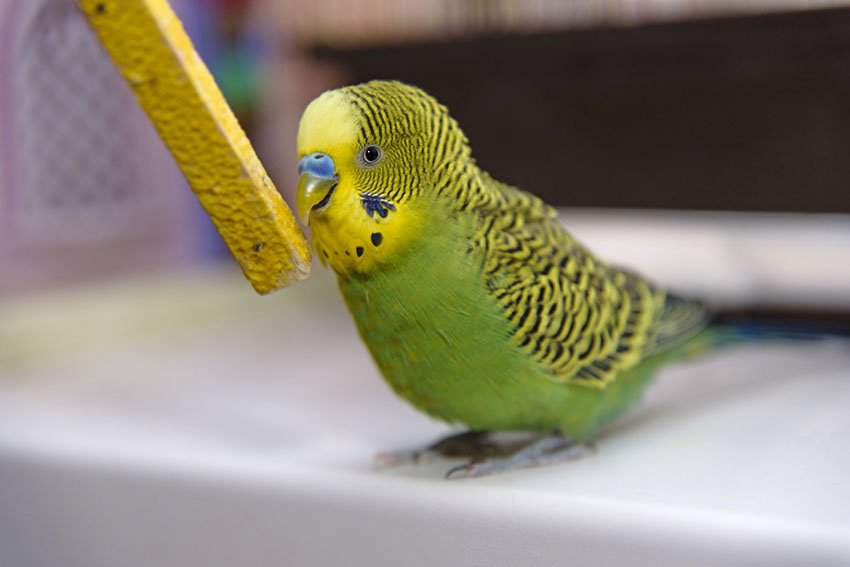Clicker training is an effective way to teach parrots tricks and commands. This positive-reinforcement technique involves using a clicker to signal to the bird that they have performed a desired behavior, followed by a reward such as a treat or praise.
With consistency and patience, parrots can learn a variety of tricks and commands through clicker training, including targeting, waving, and even playing basketball. It is important to start with simple behaviors and gradually increase the difficulty level as the bird becomes more proficient.
By using this training method, parrots can have fun while engaging in mental stimulation and building a stronger bond with their owner.

Credit: www.omlet.co.uk
Understanding Clicker Training: What It Is And How It Works
What Is Clicker Training?
Clicker training is a positive training method that involves the use of a clicker to mark desired behavior. The clicker is a small plastic handheld device with a metal tongue that produces a distinctive clicking sound. The sound marks the exact moment when the bird performs the desired behavior, making it easier for the bird to understand which behavior is being reinforced.
The process involves several steps:
- Charging the clicker: Introduces the sound of the clicker and associates it with a reward.
- Shaping: Breaking a behavior down into small steps to achieve the final goal.
- Reinforcement: Rewarding the bird for performing the correct behavior.
The Science Behind Clicker Training
Clicker training is based on the principles of operant conditioning, a type of learning where behavior is modified by its consequences. When the bird performs a specific behavior, and it is followed by a reward, it is more likely to repeat that behavior in the future.
By using a clicker to instantly mark the desired behavior, the bird learns quickly and precisely which behavior is being reinforced.
Benefits Of Clicker Training For Parrots
Clicker training has several benefits for parrots, including:
- Builds trust and strengthens the bond between the bird and trainer.
- Provides mental stimulation and enrichment, leading to a happier and healthier bird.
- Allows the bird to learn at its own pace, without the use of force or punishment.
- Enhances communication and understanding between the bird and trainer.
- Can be used to teach a wide range of behaviors and commands.
Overall, clicker training is an effective and humane training method that works well with parrots and is a great way to build a stronger bond with your feathered friend.
Getting Started With Clicker Training: Setting Up Your Training Environment
If you want to teach your parrot some cool tricks using clicker training, you need to create the perfect training environment. Here are some guidelines for preparing your parrot for clicker training, setting up a distraction-free environment, and selecting the necessary tools and materials.
Preparing Your Parrot For Clicker Training
Before starting clicker training, you need to ensure that your parrot is ready to learn and understands the basics of positive reinforcement training. Here are some tips that can help you:
- Get your parrot used to your hands by offering treats and gently stroking its feathers.
- Establish eye contact with your parrot by calling its name while holding a treat between your fingers.
- Start with simple commands like “step up” or “turn around” to build a basic repertoire of tricks.
Setting Up A Comfortable And Distraction-Free Environment
To help your parrot concentrate and stay engaged during clicker training sessions, setting up a comfortable environment is critical. Here are some tips for creating a distraction-free zone:
- Choose a quiet and well-lit room where you and your parrot can have privacy.
- Avoid clutter and make sure that your parrot has plenty of space to move around.
- Remove any potential distractions like toys, mirrors, or shiny objects.
Tools And Materials You Will Need For Clicker Training
To begin clicker training, you’ll need a few essential tools and materials. Here’s what you should have at hand:
- Clicker: A small plastic device that makes a clicking sound to signal your parrot that it has done the right thing.
- Treats: Use small pieces of food that your parrot loves, such as seeds, nuts, or fruits.
- Perch: A wooden or plastic stick where your parrot can stand and perform its tricks.
- Training target: A small stick with a colorful ball on top that you can use to guide your parrot’s movements.
By preparing your parrot, setting up a comfortable environment, and selecting the right tools and materials, you can create a successful clicker training routine that both you and your parrot will enjoy.
Conclusion
Clicker training is a fantastic way to establish a strong bond with your parrot while improving their cognitive abilities. The art of clicker training involves patience, consistency, and a lot of positivity. It’s an excellent way to teach your parrot tricks and commands, ranging from basic to complex.
With clicker training, you can teach your feathered friend to wave, nod, come when called, and even play fetch. Remember that it’s vital to start small and gradually build up to more complex behaviors. Also, always ensure that your parrot is adequately motivated and rewarded for their efforts.
It takes time and dedication, but the rewards of having a well-trained parrot are immeasurable. So go ahead, grab your clicker, and start training your parrot today!
